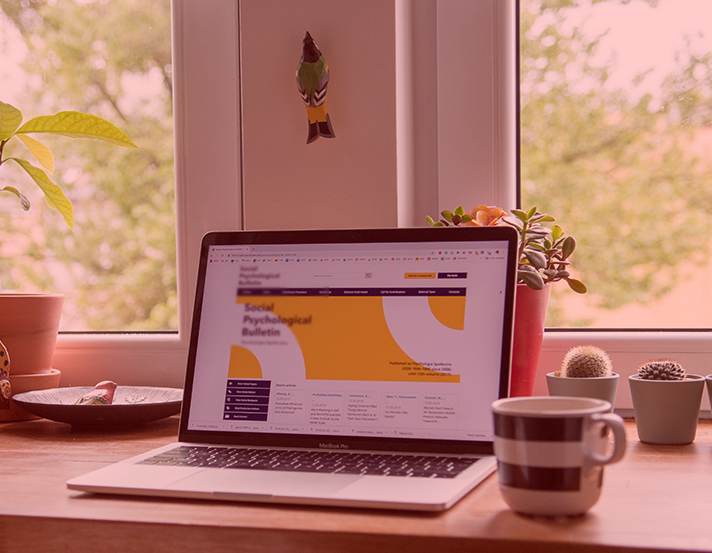Services
Many businesses struggle to fully capitalise on marketing automation tools within their existing website and wider digital landscape. As a result, they’re likely missing opportunities to improve existing workflows and customer experiences that can lead to further streamlined success.
Instead of determining how they can leverage their existing digital landscape to make it work harder, businesses often find themselves opting in for something shiny and new, only to find themselves overwhelmed at the sheer amount of work that it requires to execute on it properly.
As a result, they’re missing opportunities not only for quick wins, but also in the mid to long term when it comes to reaping the rewards of having automated systems and processes running that can save time and revenue increases over time.
If you like the sound of creating opportunities from within vs reinventing the wheel, then having a strategy for how you can leverage automation within your business could be exactly what you’re looking for.
We often find ourselves developing and implementing automation strategies for our clients when there is already a well-established platform and customer base intact, making the opportunity to leverage this particular solution even more impactful.
For example, with an existing customer base businesses can quickly gauge the effectiveness of automation, allowing for rapid adjustments and improvements.
So in this blog we’re going to run through a step-by-step guide for how to set up an automation to create a more seamless, personalised customer journey focused on driving additional revenue growth.
Firstly, let’s define the types of automation we’re going to focus on specifically:
Marketing Automation: The use of software and technology to streamline, automate and measure marketing tasks and workflows.
CRM Automation: The use of technology to automate and streamline the processes of managing customer relationships, including tasks such as data entry, follow-ups and customer communication.
Now that we’re clear on the two types of automation we’re going to focus on, let's dive deeper into the specific steps involved in creating an end-to-end automation strategy for implementation.
Step 1: Defining Objectives & Target Audience
To initiate a marketing automation strategy, brands must first clearly define their objectives. Each campaign depending on its goal should be tailored to a specific purpose, e.g., lead generation. The goals and objectives of the marketing automation strategy should be closely aligned with the brand’s wider business goals and objectives, ensuring a clear and consistent foundation is being laid.
Understanding the target audience is also critical for building a successful marketing automation strategy. Brands need to understand who their target audience is, what their needs and preferences are and how they interact with the brand. Conducting market research and analysing legacy customer data are just a few ways to gain insights into the behaviours that will help in creation of targeted campaigns that will achieve desired results.
Step 2: Mapping Out The Customer Journey
Creating a detailed map of the customer journey helps in identifying key touchpoints where automation can enhance visitor engagement. It also will provide us with a comprehensive view of the visitor journey. A few noteworthy steps as follows:
-
Identify all touchpoints where visitors interact with your business, both online and offline.
-
Map these touchpoints to understand the different stages of the customer lifecycle.
-
Define the role of each touchpoint in the visitor journey.
-
Determine how automation can improve interactions at each touchpoint and deliver the right message at the right time.
-
Align with your wider digital landscape, including additional landing pages (if required), analytics and tracking software, etc.
Step 3: Identify and Choose The Right Marketing Automation Software
Selecting the appropriate marketing automation platform is crucial for the strategy's success. It is important to choose a platform that aligns with the brand’s goals and objectives, considering features, functionality and price. Some popular marketing automation platforms include:
ActiveCampaign: ActiveCampaign supports email marketing, marketing automation, and CRM. It features customer segmentation, email campaigns, dynamic content creation, automated emails and more. ActiveCampaign is known for its powerful automation capabilities and its ability to create highly targeted marketing campaigns, making it one of if not our favourite system to work with.
HubSpot:
HubSpot is a comprehensive marketing, sales, and service platform known for its user-friendly interface and robust set of tools. It offers robust marketing automation features including email marketing, lead management and social media management. HubSpot's integrated CRM system allows for seamless tracking and management of customer engagement, making it a popular choice for businesses of all sizes.
Salesforce (Pardot): Salesforce Pardot is highly popular for its robust sales processes, lead scoring, lead nurturing and email marketing capabilities. It is well-integrated with Salesforce CRM, making it a strong choice for sales teams already using Salesforce for their customer relationship management needs. Its advanced analytics and AI-powered tools help in creating highly targeted marketing campaigns.
Adobe Marketo Engage:
Marketo Engage is another top choice known for its powerful lead management, email marketing and marketing analytics features. It is widely adopted by organisations for its ability to handle complex marketing automation tasks. Adobe's integration enhances its capabilities with generative AI, making it a preferred platform for large enterprise team members aiming for sophisticated marketing strategies.
Whether you already utilise tech that has automation features, or starting from scratch, make sure the technology you’re adopting can seamlessly integrate into the entire digital ecosystem with the least amount of friction as possible.
Step 4: Create Engaging Content
Customers are more likely to trust, engage and convert with content that is relevant to their needs. Therefore, personalisation is a key element in building any successful marketing automation strategy, not to mention deeper connections with customers off the back of it.
To achieve the right levels of personalisation for your offering it helps to start by having a good understanding of your different customer preferences. Only then will it become more evident as to how you can segment these audiences with a data-driven approach in order to make the most of delivering targeted content via your preferred automation software moving forward.
By creating dynamic content that adapts based on customer profiles and their specific actions, businesses can ensure that each touchpoint and interaction is a meaningful one. This includes providing relevant product recommendations, tailored email content and targeted website experiences, all designed to meet the specific interests and behaviours of each type of customer.
Step 5: Set Up Automated Workflows
Automated workflows are the backbone of successful marketing automation strategies. They enable the delivery of timely, targeted messages to the audience at designated touch points throughout their journey.
To set up these workflows, businesses will need to align their automation strategy with the specific touchpoints, preferred automation software and any other digital platforms such as landing pages in order to determine how these workflows can best be utilised.
The key to successful automations is making them not feel like automations. This is where timing and relevance is paramount in terms of addressing specific audience needs and behaviours that will add value to their wider customer journey.
Step 6: Measure and Analyse Campaign Results
To understand the success of automated marketing campaigns, brands must measure and analyse campaign results using analytics tools. Tracking key performance indicators (KPIs) is critical for providing actionable insights that can help optimise strategies and improve existing plus future workflows. We often recommend utilising reporting tools such as Looker Studio for reporting key metrics and data from Google Analytics in a more digestible format.
By regularly assessing performance throughout various stages of the automation workflow, businesses can make data-driven decisions that lead to better outcomes and more successful campaigns overall.
So whether you’re looking to streamline operations or improve your customer experiences, there is a good chance that embracing automation can improve various aspects of your business. Like anything with varying degrees of complexity we recommend first zooming out to get the entire lay of the land.
Once the entire end-to-end experience is understood, developing the strategy will guide your implementation in a more controlled and intentional manner, requiring less rework down the line. Diving head first into creating automations can be enjoyable, but can also lead to disjointed experiences and frustrated users as a result, which you’ll want to avoid at all costs.
Finally, if you’re interested in getting help with exploring marketing automation but don’t know where to begin, get in touch and we can help you determine what your next steps could look like.


























